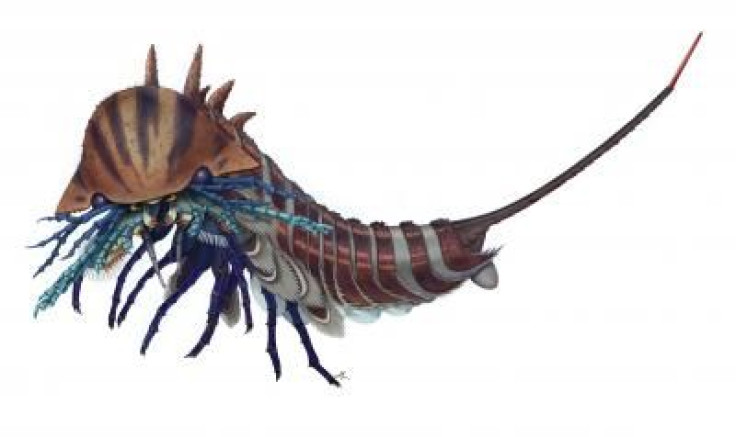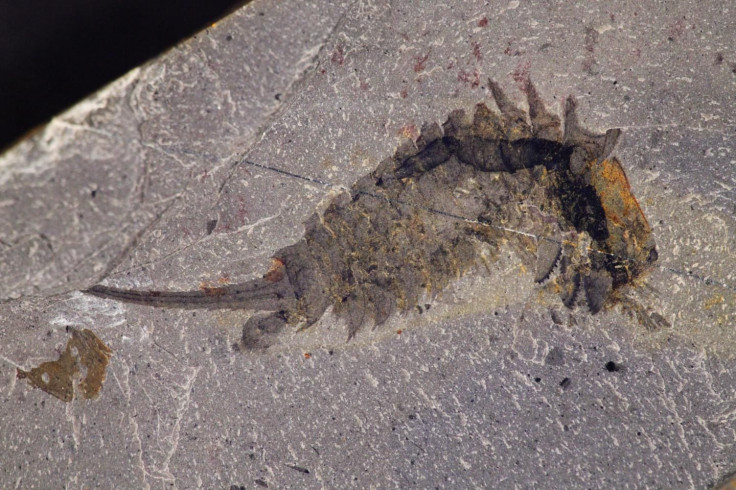Small Seafloor Predator With ‘Jackknife’ Head Lived 508 Million Years Ago

A small creature, smaller than an inch in length, that lived about 508 million years ago was, despite its small size, likely a fierce predator on the seafloor during the middle Cambrian Period. This conclusion by scientists was based on the design of the creature’s head, which was very sophisticated.
Habelia optata is the oldest close parent species to modern spiders, scorpions, and horseshoe crabs, as well as the extinct sea scorpions. It belongs to an invertebrate family of animals called arthropods, which also include lobsters and insects. Like several other soft-bodied animals that live around the same time, its fossils were found in the Burgess Shale deposit in Canada, which was discovered in 1886.
Fossils of H. optata were found over 100 years ago, but it is only now, with a paper published Thursday in the journal BMC Evolutionary Biology, that scientists have been able to classify it properly and place it on the tree of life. According to researchers from the University of Toronto and the Royal Ontario Museum, both in Canada, H. optata was “a close relative of the ancestor of all chelicerates.”

Chelicerates and mandibulates are two subgroups of arthropods. The former are called so because of appendages called chelicerae at the front of the mouth that are used to cut food. Mandibulates are named after appendages called mandibles that are frequently used to grasp, crush or squeeze their food. The latter group also has antennae.
“Habelia now shows in great detail the body architecture from which chelicerates emerged, which allows us to solve some long-standing questions. We can now explain why, for instance, horseshoe crabs have a reduced pair of limbs — the chilaria — at the back of their heads. Those are relics of fully-formed appendages, as chelicerates seem to originally have had heads with no less than seven pairs of limbs,” lead author Cédric Aria, who finished his Ph.D. from the university and is now a post-doctoral researcher at the Nanjing Institute of Geology and Palaeontology in China, said in a statement Wednesday.
According to the new analysis, based on 41 specimens, H. optata likely had an armored body covered in spines, and it was divided into three regions — head, thorax, and post-thorax. The body itself was about two centimeters long, with an equally long tail. Modern chelicerates also have the same three-region division of bodies, but with one crucial difference to H. optata. The extinct creature had walking limbs on the thorax (five pairs of legs) while scorpions and the rest of the kind have these limbs on the head region.
The head region of H. optata, on the other hand, was especially complex, according to researchers. These features included “a series of five appendages made of a large plate with teeth for mastication, a leg-like branch with stiff bristle-like spines for grasping, and an elongate, slender branch modified as a sensory or tactile appendage,” according to the statement.
Many of these features are more in line with modern mandibulates, in terms of functionality. Such similarity of function, despite different evolutionary origin, is called “convergence.”
“From an evolutionary point of view, Habelia is close to the point of divergence between chelicerates and mandibulates. But its similarities with mandibulates are secondary modifications of features that were in part already chelicerate in nature. This suggests that chelicerates originated from species with a high structural variability,” Aria said.
Because of its well-developed head, which had a number of appendages, it could use to tear apart its prey, as well as well-developed legs for walking, researchers surmised that H. optata and its ilk were likely active and fierce predators on the seafloor, hunting small shelled creatures like trilobites.
The open-access paper was titled “Mandibulate convergence in an armored Cambrian stem chelicerate.”
© Copyright IBTimes 2024. All rights reserved.











